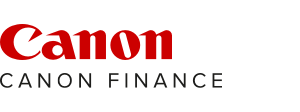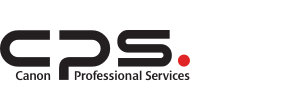Does the exception prove or disprove the rule? In the case of digital transformation, you better not hope so, as the prospect of swapping every business process your organisation undertakes internally and externally with clients/customers is unlikely to ever reach the nirvana of l00% digital.
What are these exceptions and where are they likely to occur? Most commonly it’s the traditional legacy processes that require a step where documents are printed and handled manually, for instance in finance processing and contract management.
Esignatures have been around a long time, but dogged resistance to digitising this step remain despite widespread recognition of their legal validity and the practical advantages of digital approval. In many cases, legacy apps may not allow their use.
In a perfect enterprise, all data and content would be entirely integrated throughout all business apps, with workflow and business process management (BPM) systems driving most tasks. However, many of today's organisations are only beginning to make this transition. The Australian Centre for International Agricultural Research (ACIAR) is one Australian federal government agency that has taken firm strides in its quest to achieve this ideal.
ACIAR is a statutory authority established in 1982 that works with developing nations to fund research projects.
While being one of the smaller Australian federal agencies, with 55 staff based in Canberra and 25 overseas it faced the typical challenges of dealing with the traditional information silos. Critical information was locked away in a legacy EDRMS, Outlook, highly customised Lotus Notes databases, a SharePoint Intranet and personal devices, with limited reporting ability.
Mobility was also critical as approximately 16 ACIAR Canberra based staff members travel for up to 30% of the year to the countries ACIAR works in.
Joanna Hicks, ACIAR’s Manager, Business Systems Support, explains the many challenges that the agency faced in 2014.
“There was a dislocation between corporate, research, Canberra and overseas staff around access to information, internal communication and collaboration. The duplication of information with multiple sources of truth also made on-boarding new staff difficult.
“Our organisational and system knowledge was held by a few key staff, who also had the responsibility for reporting and administration support. This presented a risk to the agency.”
“There was also pressure on a very small IT department which had to support growing agency requirements to maintain modern and secure systems and better manage information,” said Hicks.
Having a mix of digital and paper based processes means many agencies are on the back foot in relation to the Government's Digital Continuity 2020 policy. While ACIAR still has some legacy processes in 2016 that require a step where documents are printed and handled manually, for instance in finance processing and contract management, it is working steadily towards a future where all documents created digitally are managed digitally.
Having worked with SharePoint since the 2010 edition, when it was chosen to provide the organisation with an intranet, ACIAR elected to put all its eggs in one basket and standardise on SharePoint 2013 as an information management platform.
Over 2015-2016 the organisation migrated email to Office365 and content from its legacy EDRMS (Meridio) and Lotus Notes to a Cloud as a Service (CaaS) deployment of SharePoint 2013 provided by Dimension Data.
The migration from Lotus Notes was accomplished using a Dell migration tool that mapped fields from Notes to SharePoint, whereas the Meridio migration will be managed jointly by internal IT staff and external contractors. Some content will be moved to the active SharePoint site, some to a SharePoint archive and the rest stored in a duplicate fileplan on shared drives as an archive. All of the content will be searchable and accessible but will now be managed under National Archives of Australia (NAA) Administrative Functions Disposal Authority (ADFA) and the Research & Development General Records Authority (GRA).
Typically the main obstacle to full digital transformation lies somewhere in your IT platforms.
Paul Shetler, head of Australia’s Digital Transformation Office, pointed out as much in a LinkedIn post following his recent departure from the role.
Reviewing his 16 months at the helm of the (then) DTO, Shelter notes: "For services to be truly transformed, we need to go beyond the front end, and transform the back office IT too. If we don’t rethink the underlying IT systems and business processes, we’re constrained to do little more than make cosmetic changes. After all the service doesn’t stop at the user interface, it includes an ensemble of people, systems and processes that support it."
“The blockers to positive transformation are structural, cultural and skills-based,” he said.















